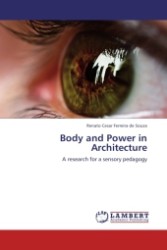- ホーム
- > 洋書
- > ドイツ書
- > Mathematics, Sciences & Technology
- > Computer & Internet
- > internet, data communication, networks
Description
(Text)
Master's Thesis from the year 2009 in the subject Computer Science - IT-Security, grade: 19.61 / 20, , language: English, abstract: Cryptography is a technology intended to protect digital data being transmitted over communication systems. It provides mathematical methods for converting data into an unreadable form. Steganography is a technique by which the secret digital data is sent from side to side by hiding it in an innocent-looking digital cover, so the existence of hidden data is concealed.Combining Cryptography and Steganography provides two-layers protection. The first layer encrypts the secret message, so it becomes unreadable. While the second layer hides the encrypted message into an ordinary non-secret digital cover, so it can not be seen. In this thesis, we briefly review the principles of cryptography and its algorithms, while we accomplish a detailed study in the field of JPEG-based steganography since JPEG format is the most used through the internet.In Chapter 4, we perform a comparative study between DCT-based steganographic methods F3, F5, and Mod4 using 60 JPEG images. In this study, three steganographic requirements are considered; embedding capacity, stego image quality, and statistical properties. The study compares the considered methods from the standpoint of the Magic Triangle. It inspects how each of the studied methods satisfies the three basic requirements, and then it determines an approximate location for each algorithm inside the Magic Triangle. The study shows how each of the studied algorithms stands compared to the other ones.In Chapter 5, we discuss the shrinkage phenomenon occurring during the F5 embedding process and present all the effects of shrinkage caused by the F5 process. To reduce the shrinkage rate, we propose a new F5 model based on the original method. The new F5 model controls the shrinkage rate by building a Map Of Shrinkage (MOS). The MOS map helps to keep the shrinkage at a lower probability of occurrence. We perform a comparative study between the new proposed model F5_MOS and the studied methods; F5_ME and Mod4. The study is based on the implementation of the algorithms on 60 JPEG images taking into consideration the main steganographic requirements. The comparison shows how the suggested model F5_MOS provides more embedding capacity and how it improves the stego image quality and provides more robust statistical properties compared to the common F5_ME.Notes:1- Chapters 4 and 5 contain ALL the tables of numerical results.2- The 60 used JPEG images are shown in the Appendix.3- This thesis is from May 2009.
(Author portrait)
Email : wasim.kchm@gmail.com







